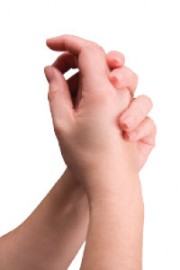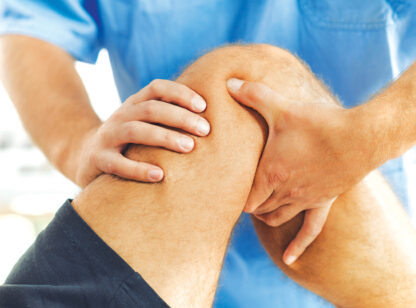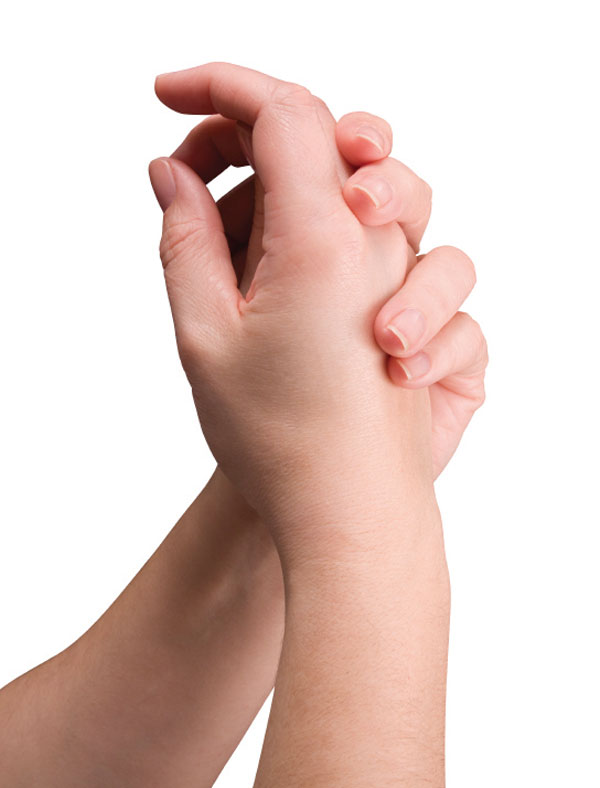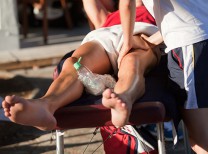 Regular exercise eases the pain and returns function to people suffering with arthritis. Why do you think the first thing your doctor does when you complain of a sore knee or painful shoulder is to send you to physical therapy? They want you to strengthen the muscles supporting your aching joint to treat your pain. Exercise is the best medicine.
Regular exercise eases the pain and returns function to people suffering with arthritis. Why do you think the first thing your doctor does when you complain of a sore knee or painful shoulder is to send you to physical therapy? They want you to strengthen the muscles supporting your aching joint to treat your pain. Exercise is the best medicine.
Over 1 in 5 people in this country are diagnosed with osteoarthritis. If you’re over 65, that number jumps to 50%. Osteoarthritis (also known as degenerative joint disease) is the most common type of arthritis and is caused by wear and tear on the joints. It most commonly affects weight bearing joints – hips, knees, and feet. But it can affect any joint in the body including the joints in your spine. By 2030 there will be 67 million Americans with diagnosed arthritis. Yet the trend in health care right now is to cut back, not expand, the coverage for physical therapy – the mainstay of treatment for arthritis.
Although we can’t predict who will get painful arthritis there are certain risk factors that predispose you to developing this disease. Some of these risk factors include obesity, age, a history of joint trauma, and your occupation (jobs that cause repetitive trauma and over use can predispose you to developing arthritis).
We think of osteoarthritis as being a disease of old age, but pain is not an inevitable part of growing old. If we took an X-ray of the hips and knees of every person over the age of 40 almost 90% of them would have evidence of joint degeneration. Yet these changes are asymptomatic (no pain). So just because it appears on an X-ray doesn’t mean it hurts or will ever hurt.
If you do hurt, the first treatment your doctor will prescribe is physical therapy. Licensed physical therapists (PTs) are qualified to teach you how to exercise safely and effectively to treat your pain (personal trainers don’t have this medical expertise). Your doctor may also prescribe a non-steroidal anti-inflammatory medication (NSAID) to calm the inflammation in your joints; the ‘itis’ in arthritis means inflammation. These drugs such as Ibuprofen and Naprosyn should not be used on a long term basis; they can cause bleeding ulcers, kidney failure and heart attacks. And the older you are the more likely you will suffer with one of these complications. But they are generally safe and very useful on a short term basis to attack the cause of your pain.
If your pain is not controlled, cortisone injections could be the next step and possibly an injection of synthetic synovial fluid such as Orthovisc or Hyalgan. Injections are used to control your pain long enough so that you can get moving and get your muscles strong. Ultimately, your commitment to a lifetime of proper exercise will be the most significant factor in controlling the pain of arthritis.
Exercise is effective on several fronts to combat arthritis. First, it has been shown to make a real difference in easing pain and returning function to people suffering from arthritis. Second and most importantly, exercise prevents the development of pain by keeping the muscles in top condition to support your aging joints. The stronger your muscles, the more work they can do and the less wear and tear on your hips, knees and even shoulders. Lastly, exercise is the best way to lose weight and spare your poor joints the burden of lugging around those extra pounds.
Although many of us walk for our daily exercise, this is not the best option if you have painful arthritic knees and/or hips. The first step is to increase the flexibility of your aching joints with appropriate stretching exercises. After a few days of stretching, progress quickly to weight lifting exercises to increase the strength of your muscles supporting those joints. This should all be done under the supervision of a physical therapist.
Only after your muscles are strong enough are you ready to start your walking or biking program. Walking before your muscles are strong enough to support your joints will only increase the wear and tear on your joints, further break down the cartilage and lead to increased pain. It is important to focus on strength first and then ‘cardio’ for heart health and weight loss.
So remember, exercise should be a key component in your health care regime to manage arthritis.
Dr. Ruth Anderson is a noted fitness expert, wellness consultant, pain management specialist and author of “Get Moving! Live Better, Live Longer.” Desert Pain Specialists can be reached at 760.625.1960










































Comments (0)